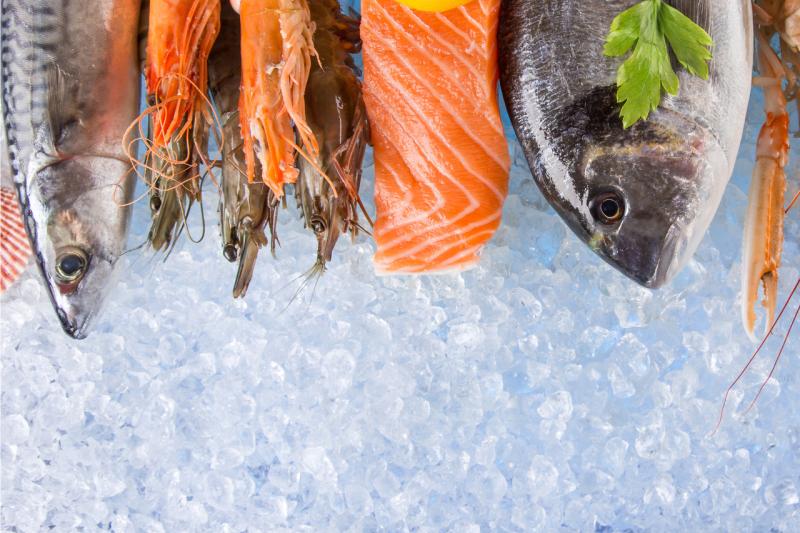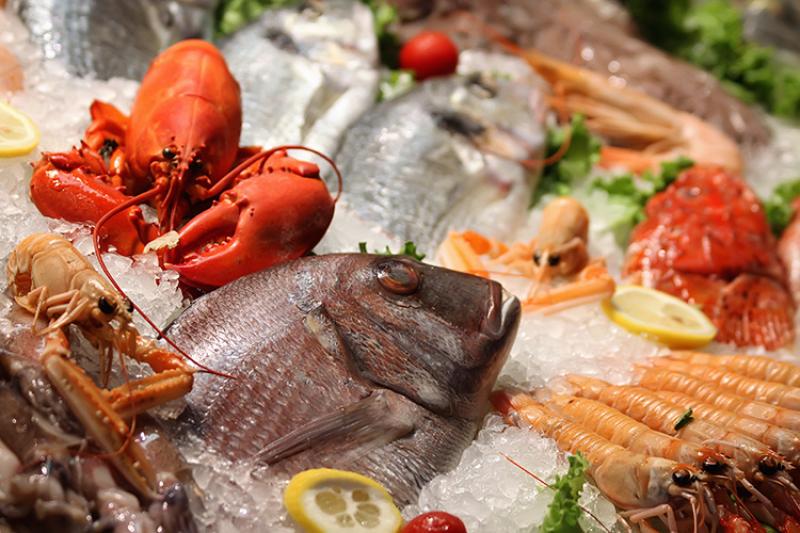October is National Seafood Month, and a fitting time to celebrate that the United States is recognized as a global leader in sustainable seafood—both wild-caught and farmed. U.S. fishermen and fish farmers operate under some of the most robust and transparent environmental standards in the world.

Seafood Features
Podcast: Looking Back on a Legacy of Seafood Sustainability
As we wrap up Seafood Month 2019, we’re talking to Laurel Bryant, Chief of External Affairs for NOAA Fisheries. Throughout her 25-year career at NOAA, she has championed the benefits of healthy seafood and supported strong partnerships across the seafood industry.
Listen to the podcast on seafood sustainability
Alaska’s Pollock Fishery: A Model of Sustainability
Watch this video to learn how a combination of good science and collaborative management makes the Alaska pollock fishery a success.
Interview with John Kaneko, Hawaii Seafood Council
Learn from an expert about fishing in Hawaii, and the one-of-a-kind Honolulu Seafood Auction.
Read the Q/A with Jon Kaneko and watch a video on the Honolulu Seafood Auction

Fish Habitat “Realtors” Keep Sustainable Seafood on your Plate
NOAA Fisheries works to identify and protect essential fish habitat—areas that fish call home. By doing so, we ensure that there’s sustainable seafood for dinner!
Learn more about our work to protect essential fish habitat

U.S.-Caught Sharks are a Sustainable Food Choice
It’s a common misconception that all sharks are endangered. It’s true that overfishing, habitat loss, and other practices have greatly depleted some shark populations in foreign waters. But that’s not the case in the United States. In fact, none of the 43 Atlantic shark species managed by NOAA Fisheries are listed as endangered in U.S. waters under the Endangered Species Act.
Learn more about the sustainability of the U.S. shark fishery

From Local Farm to Table: Our History of Sustainable Fish Production
Hawaiian fish ponds are part of a push to raise more fish and shellfish around the islands for cultural reasons, as well as to feed a hungry wave of tourists who visit each year. The locally-grown food promotes health and environmental responsibility.
Learn how Hawaiian fish ponds help with sustainable seafood production

New App Answers Aquaculture Siting Questions in Seconds
OceanReports is a new tool developed by NOAA's National Ocean Service and partners. Using the tool, aquaculture stakeholders—including seafood farmers, coastal managers and regulators, and environmental organizations—can rapidly assess marine environments for ocean farming suitability.
Learn more about this new aquaculture tool

Tide to Table: The Rise of Ocean Farmers
Aquaculture, also known as farming in water, is the fastest growing food production system in the world. In the United States, aquaculture farmers raised and harvested more than 80 million pounds of seafood in coastal waters and the open ocean.
Learn more about the growing aquaculture industry

Three-Part Series: West Coast Fisheries "Comeback of the Century"
At San Francisco’s Fisherman’s Wharf and beyond, sustainable rockfish returns to market and to dinner plates around the world.
Learn more about rebuilt groundfish fisheries on the West Coast
Learn how the collapse of the West Coast groundfish fishery forced a more sustainable future
Learn how fishermen are working to rebuild the market for West Coast groundfish

Eat Your Way to a Healthier You, Me, Country, and Planet
Dr. Michael Rubino, Senior Advisor for Seafood Strategy at NOAA Fisheries, discusses why seafood is good for our health, nation, and planet.
Read our latest leadership message on the importance of sustainable seafood

Preserving Poke in a Changing Climate
Managing bigeye tuna in the Pacific can be challenging, and a recent study shows that climate change may affect our supply of this fish, used to make the deliciously popular ʻahi poke. Scientists from the Pacific Islands Fisheries Science Center, the University of Hawai‘i, and the University of Tasmania teamed up to model the ecosystem in which Hawai‘i’s bigeye tuna fishery operates. The study projects the decline of catch in Hawai‘i’s bigeye tuna fishery as climate change continues to unfold. However, alternate scenarios could bolster ecosystem resilience and limit fishery declines.
Learn more about what we are doing to help preserve poke for the future



